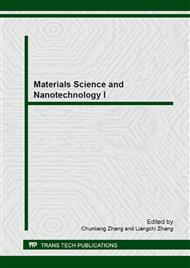p.13
p.18
p.22
p.27
p.32
p.36
p.40
p.45
p.49
New Usage for Cyclotrimerization Reaction: A Facile Synthesis of 1,3,5-Triazine Derivatives
Abstract:
Series of star-shaped molecules based on 1,3,5-triazine core have been synthesized via CF3SO3H-mediated cyclotrimerization reaction, and then characterized by 1H-NMR, 13C-NMR, MALDI-TOF-MS, and elemental analysis. The effects of different factors, such as the steric hindrance and electronegativity on the reaction efficiency, are systematically studied. The results indicate that the steric hindrance plays an important role in the reaction, while electronegativity has little impact on this reaction. In addition, the bridges including ethylene group and carbon atom between 1,3,5-triazine core and peripherals are firstly studied in this work, which expands the application of CF3SO3H-mediated cyclotrimerization reaction. Moreover, we have successfully broadened the cyclotrimerization reaction to the preparation of 1,3,5-triazine derivatives with different substituents as the peripheral, which is promising for preparation of single-layer multi-functional optoelectronic materials.
Info:
Periodical:
Pages:
32-35
Citation:
Online since:
December 2012
Authors:
Price:
Сopyright:
© 2013 Trans Tech Publications Ltd. All Rights Reserved
Share:
Citation:


